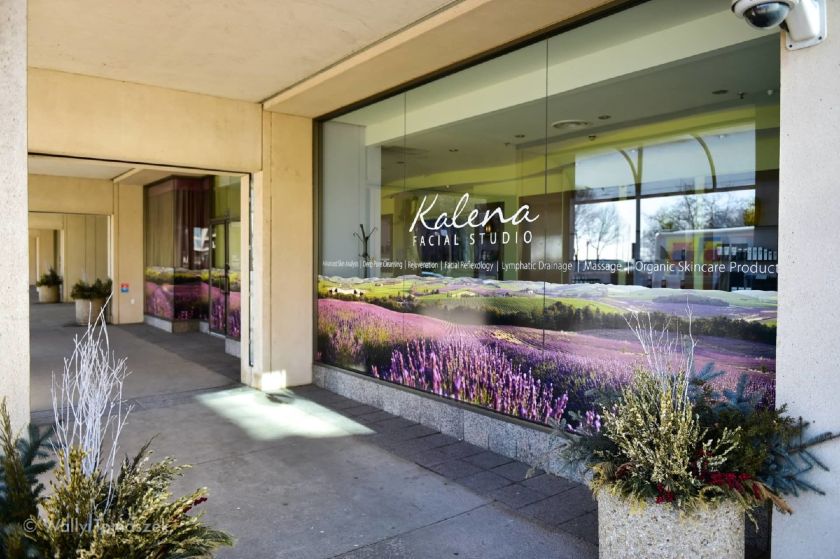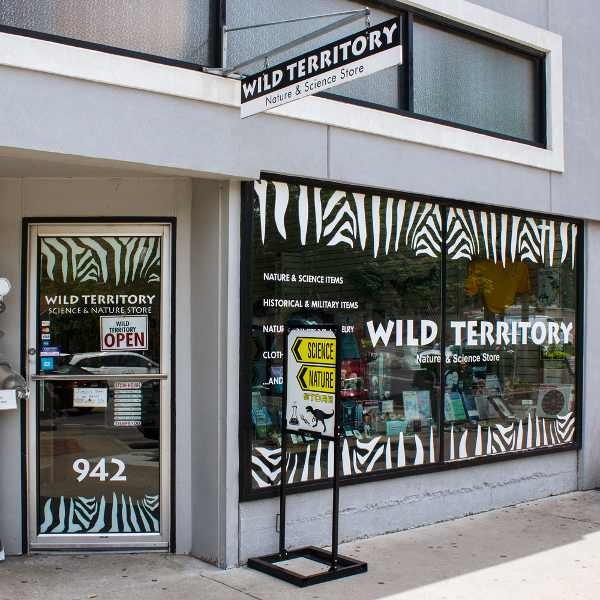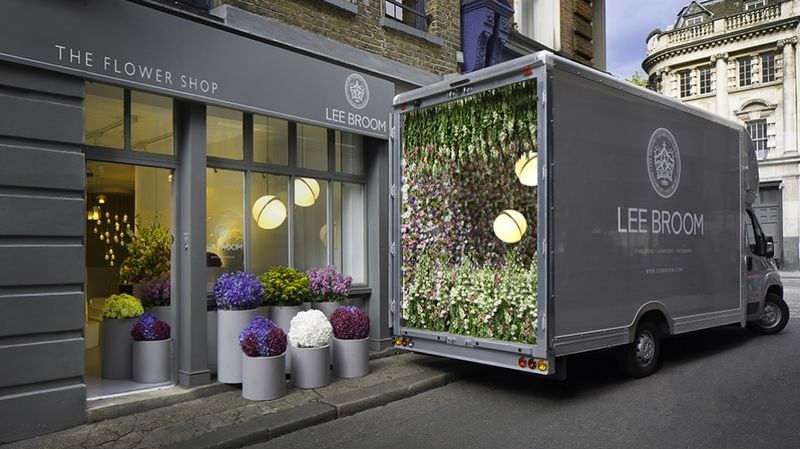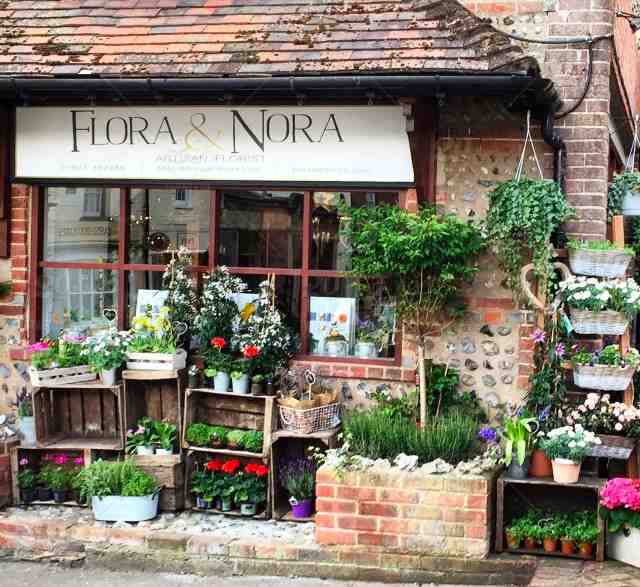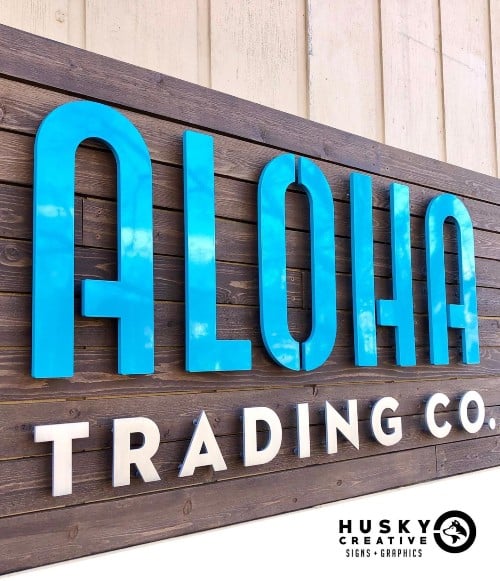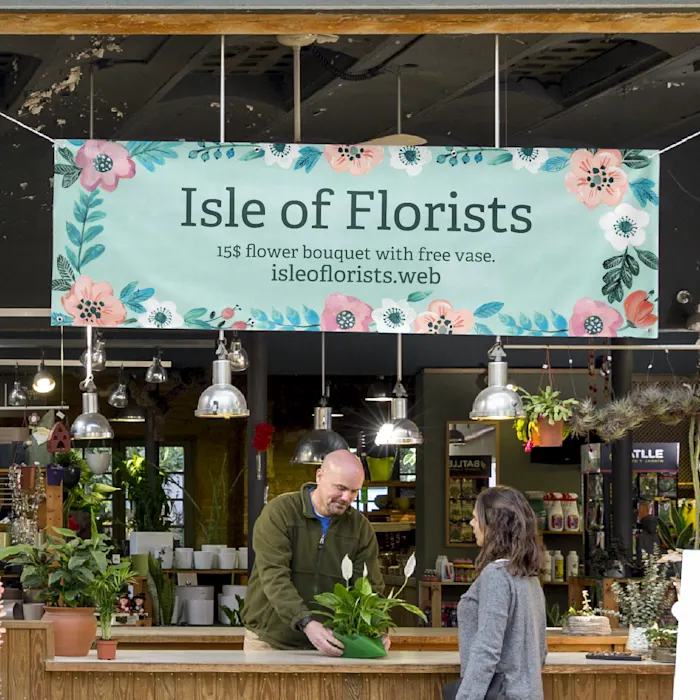Storefront signs live outside your business, announce your brand name, and provide the first impression of your store. They also play a significant role in defining your brand, driving foot traffic, and ensuring that people can see your business day or night. While storefront signs can run up to $10,000 for premium materials, you can also find signs that make an impact for only a couple hundred dollars.
The steps in this article will guide you in creating a beautifully finished storefront sign that is in line with your brand, products, and services. We’ll cover different signage options, their associated costs, and best practices.
1. Know Your Local Zoning Regulations
Before you start looking at materials and design, you should understand your local zoning regulations and the types of exterior signage allowed in your area. Understanding zoning restrictions in advance will help you save time and money upfront and avoid potential fines and expensive rework. Your local zoning commission can help you identify which rules apply to your business. You will find requirements related to:
- Width
- Height
- Color
- Font size
- Materials
- Protrusion from building
- Messaging (some communities restrict message content)
To find out about your zoning laws or where your commission is located, check with your local Chamber of Commerce or do a couple of Google searches. You can use this search string on Google:
Your ZIP Code + Signage Zoning Regulations or Your City + Signage Zoning Regulations
Before signing a lease for your retail space, be sure to check the contract for guidelines or restrictions around signage, as well as who is responsible for creating and paying for any standard storefront signage.
2. Weigh the Variables
The market for storefront signs is very diverse, and you can choose among countless material and styling options when selecting the storefront sign for your business. When selecting your sign type, you should consider several things.
3. Review & Choose the Best Type of Storefront Sign for Your Business
Once you have an idea of the regulations your store sign has to meet and have considered your budget and other variables, you are ready to select the type of storefront sign you want to use.
There are 10 different types of storefront signs; in the following sections, we will review the pros and cons, features, and average costs for each of them so you can make an informed decision about the type of storefront sign that will best service your business and its needs.
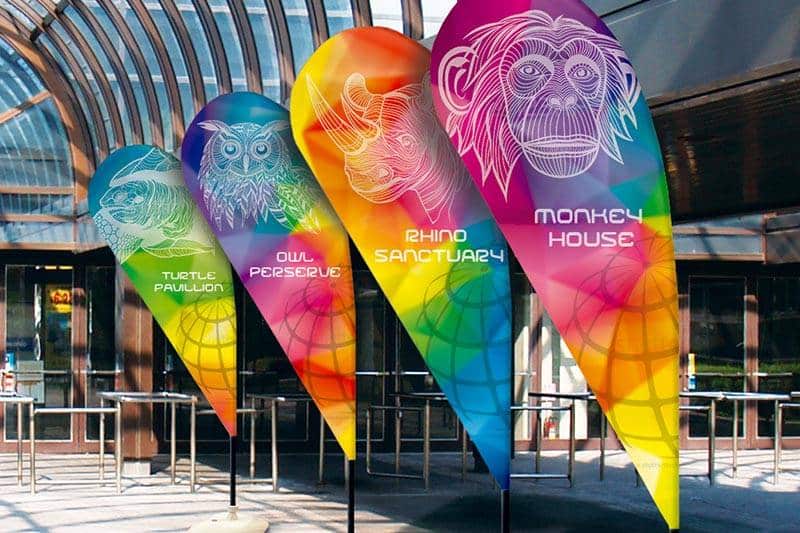
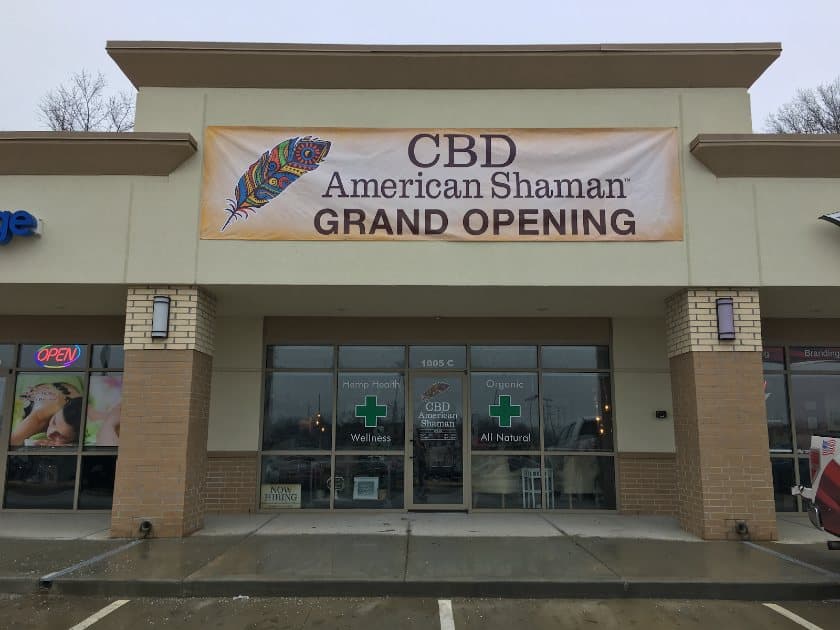
Fabric signs can be anything from free-standing displays to banners. (Sources: Yak Graphics/L and Signarama/R)
Fabric storefront signs are, you guessed it, signs made out of fabric. Typically, fabric signs are either free-standing signs or banners that lay flush on building exteriors. Fabric signs are constructed from vinyl, plastic, or nylon to increase their longevity, but they still tend to fade and get worn over time. You should expect to replace synthetic fabric signs every five to 10 years, depending on your climate and the quality of the materials.
- Pros: Low upfront cost, easy to ship and install, impermanent so can be updated, highly customizable, mobile
- Cons: Require frequent upkeep and replacement, not durable, cost more over time
- Best uses: Advertise rotating specials, pop-up locations, low budgets, mobile shops
- Average cost: $200–$400
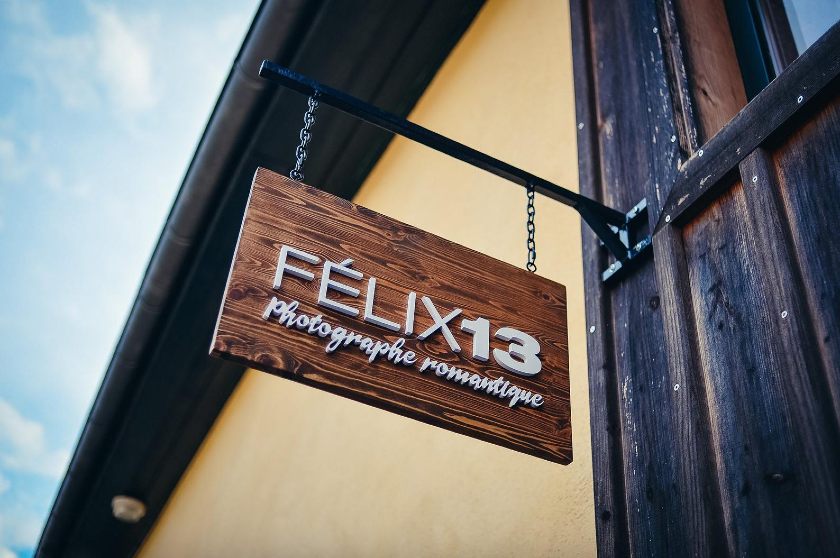
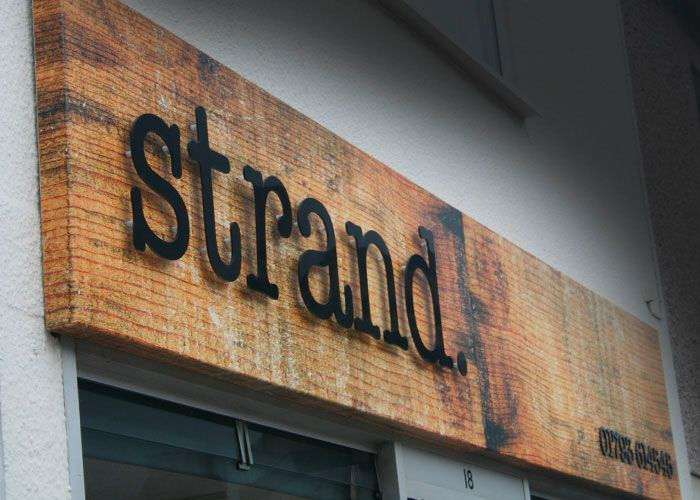
Plywood storefront signs create a rustic appeal and provide good durability for the cost. (Sources: Woodpeckers/L and Pinterest/R)
Plywood signs are constructed from plywood slats and can be composed of many different kinds of wood. Plywood signs are highly customizable and great for giving a rustic look to your storefront. Additionally, plywood signs are coated in weather-resistant finishes, making them highly durable and great for outdoor use.
- Pros: Mid-range cost, durable, statement piece, many wood options
- Cons: Typically require professional installation
- Best uses: Businesses with a more rustic, vintage-inspired, or old-fashioned brand image
- Average cost: $100–$700
A window decal creates a stunning and space effective storefront sign. Sources: (Signarama Toronto/L and Blue Collar Press/R)
Screen-printed window signs are sticker decals that you adhere to your store windows. You can also choose to use hand-painted options, but these will be more expensive. Additionally, while some businesses choose to use window signs as their primary signage, it is also common to use these as secondary signs on windows and doors.
- Pros: Easy to install, durable, cost-effective, customizable, take up no additional space, highly durable materials available
- Cons: Less visible from the street and during peak sunlight due to glare, can peel and chip over time
- Best uses: Stores with large front windows, stores with limited exterior space, stores with multiple entrances
- Average cost: $150–$600
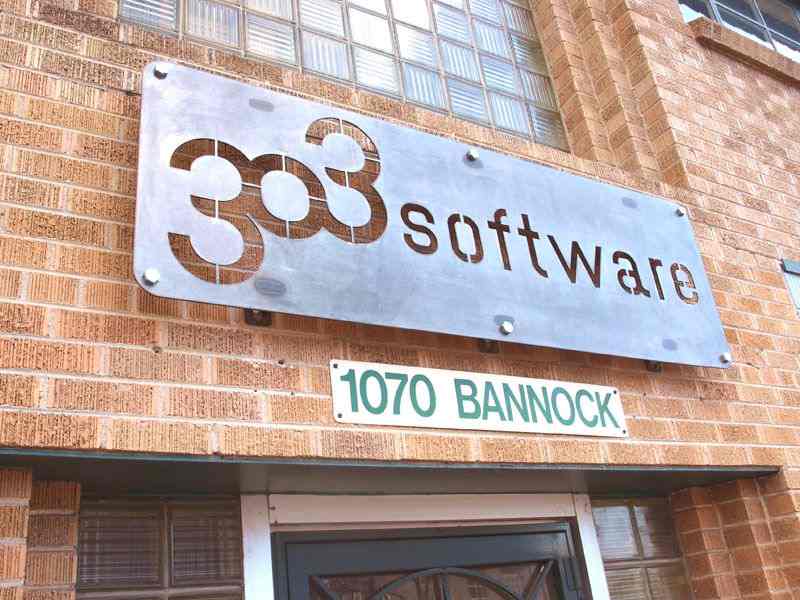
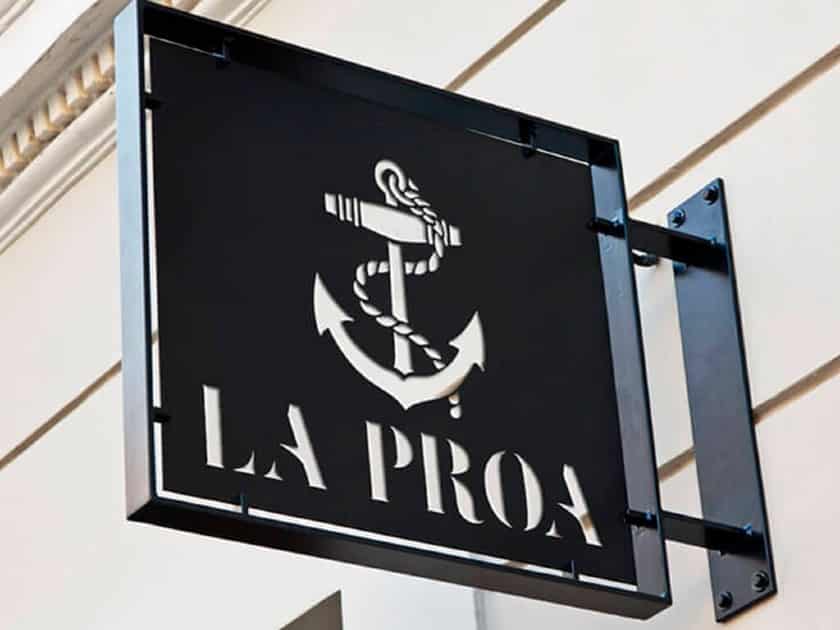
A laser-cut sign can create both rustic and sleek looks outside of your business. (Sources: Pinterest/L and Laserboost/R)
Punched metal or laser cut storefront signs are metal signs with etched or laser cut designs. These signs come in various styles that can elicit anything from a sleek and modern to rustic ranch branding.
- Pros: Extremely durable materials and finishes, many custom online retailers available
- Cons: May rust over time with wrong materials, potentially expensive upfront cost
- Best uses: Stores looking to evoke a sleek design, a ranch-inspired look, or a retro feel; raw materials retailers
- Average cost: $100–$1,500
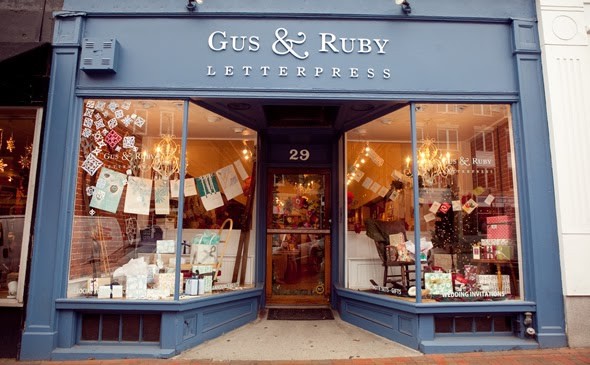
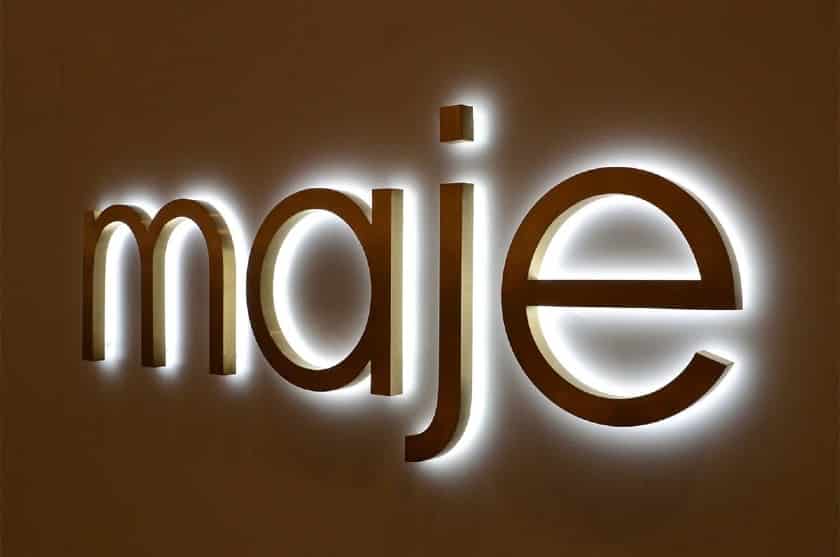
Metal lettering is a great way to give your storefront a custom, polished look. (Sources: The Daily Portsmouth/L and Pinterest/R)
Metal logo or lettering signs are signs in which individual pieces of metal lettering or design elements form your business’s name or logo. While they can be more expensive, metal logo storefront signs create a polished look and are highly durable.
Consider backlighting your letters to create a glowing effect and to allow for nighttime and evening visibility.
- Pros: Extremely durable, highly customizable, take up little space
- Cons: High upfront cost, requires a light source for evening use, requires professional installation
- Best uses: Stores going for a polished look, high budgets
- Average cost: $200–$1,000
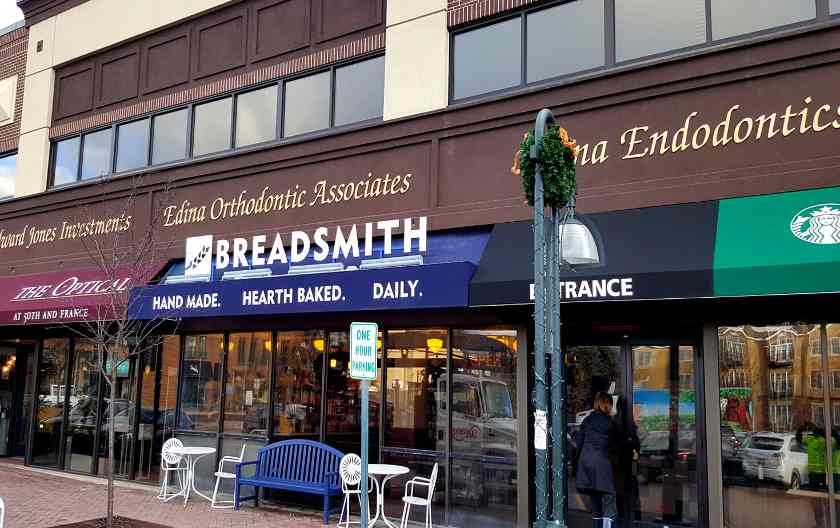
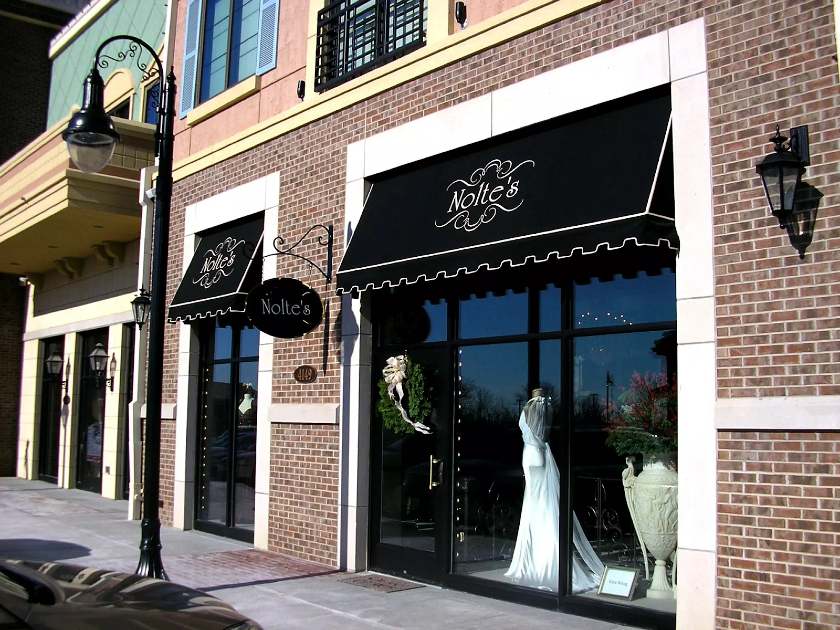
Awning signage increases visibility, creates a design element on the exterior of its shop, and provides some weather protection.
(Sources: Indigo Signworks/L Kansas City Tent & Awning Company/R)
Awning storefront signs are a type of signage where your name or logo is screen printed onto a window awning. These signs are great for making your brand name stand out from your storefront, increasing visibility, and creating an exterior design feature. They also provide some weather shelter if you want to place a clothing rack or some seating outside your store.
Where awnings used to be made of canvas materials that needed to be replaced every five to seven years, they are now made of synthetic fabrics that are water-repellent and treated to resist mildew and fading. This new tech can last anywhere from five to 15 years, depending on weather conditions.
Did You Know?
Window awnings can reduce solar heat gain in the summer by up to 65% on south-facing windows and 77% on west-facing windows; a light-colored awning will enhance this effect, reflecting even more light.
- Pros: Provide shade to customers, good visibility, durable
- Cons: High upfront cost, require professional installation, vulnerable to weather wear
- Best uses: Stores with high sun exposure, locations with bland exteriors, outdoor shopping areas, and stores with lines for entry
- Average cost: $500–$5,000
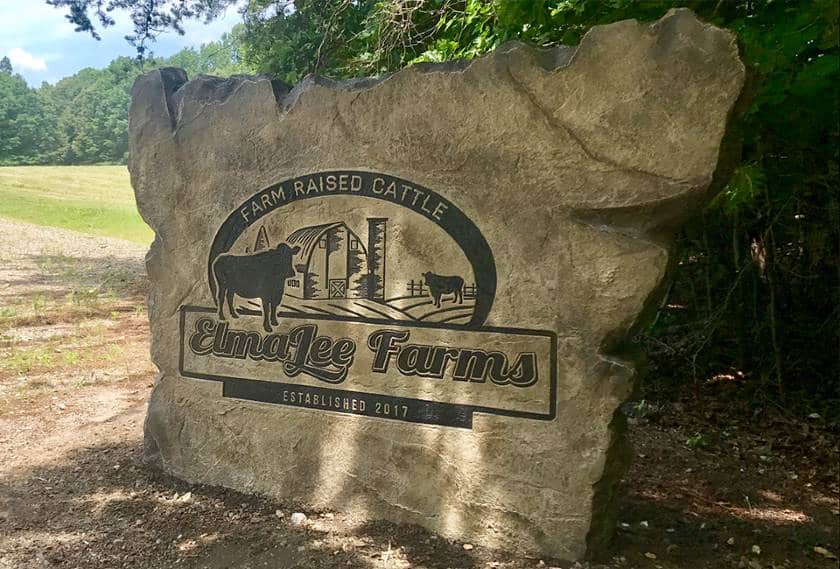
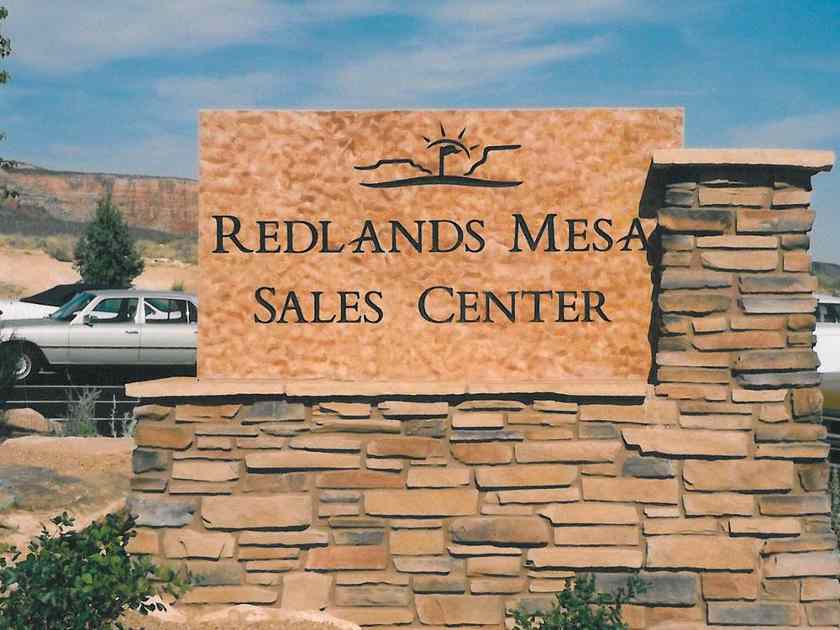
Rock signage creates a rustic look and packs a visual punch. (Sources: Boulder Design Raleigh Durham/L and Pinterest/R)
Rock storefront signs are an option where a professional etches your logos or branding into an actual rock or boulder. You often find these at the entrances to neighborhoods and parks, but they are also popular for businesses that want to create an outdoorsy or natural feel.
The greatest challenge for rock storefront signs is their size. Be sure you have enough square footage surrounding your storefront that a rock can fit without impeding traffic flow. They are also heavy, making them extremely difficult to move.
- Pros: Durable, attention-grabbing, no replacements needed
- Cons: Costly to relocate due to size and weight, high shipping and delivery cost, take up a lot of space
- Best uses: Stores with an outdoorsy brand, outdoor retailers, stores that have a lot of square footage surrounding their business
- Average cost: $500–$10,000
With options starting at $350, you can save a little money by using synthetic stone materials.
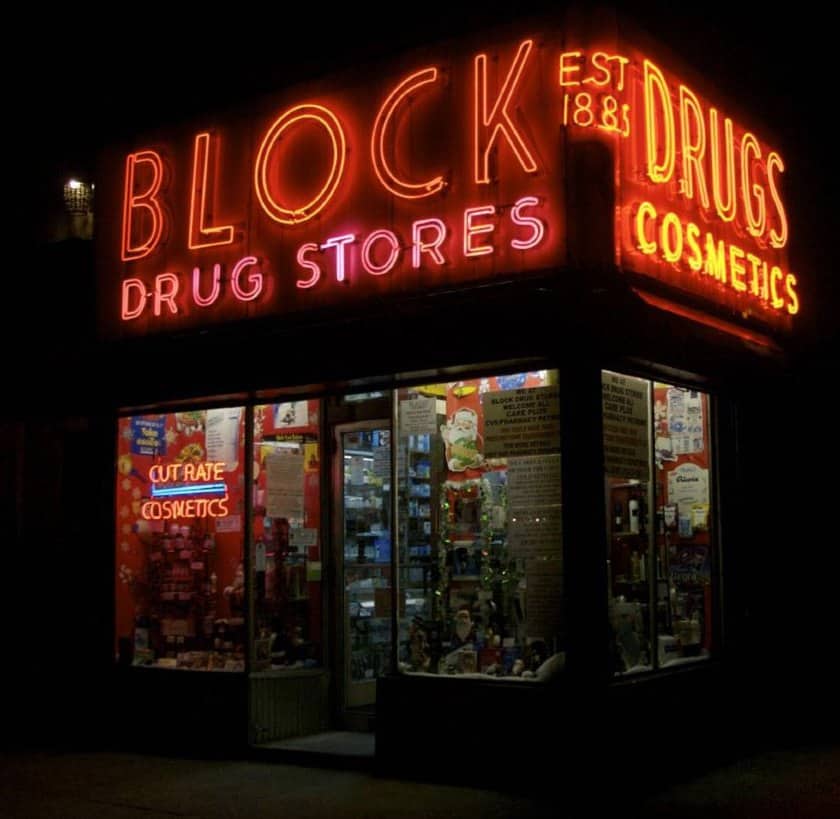
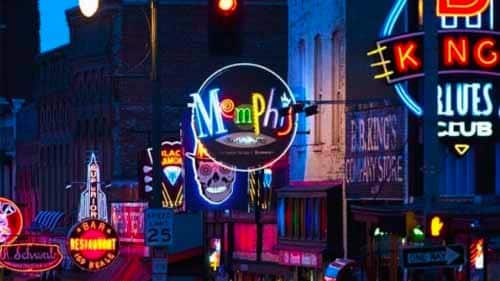
Light up your storefront and make sure that people can see you at nighttime with tub lighting.
(Sources: CollectorsWeekly/L and Ginde Star/R)
Tube light storefront signs are a type of lit signage that features thin, colorful glass tubes formed into letters or logos. Think of the classic red and blue “OPEN” signs that sit in almost every convenience store window.
Tube light signs are bright and attention-catching and your best option for being visible at nighttime. While used frequently in more utilitarian spaces like convenience stores and gas stations, when designed differently, they can also be very stylish and evoke a retro feel.
- Pros: Attention-grabbing, low energy consumption, nighttime visibility
- Cons: Fragile, need tube replacement on occasion, require professional installation, might require a heat sink
- Best uses: Businesses that operate at night, businesses located in brightly lit neighborhoods, businesses trying to evoke a retro feel, convenience stores, groceries, drug stores, and corner markets
- Average cost: $1,000–$10,000

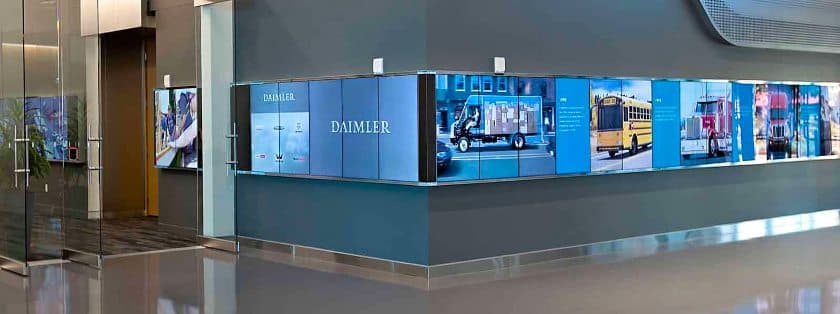
Digital signs are a versatile and eye catching option for storefront signage. (Sources: Integrate Expo/L and Microsoft Developers/R)
On the cutting edge of storefront signages are digital signs, or signs with interactive and/or digital elements. With digital signs, you can use features like rotating photos, virtual reality (VR), promotional displays, and product information pages. Additionally, digital displays can be changed and updated easily and frequently at no cost.
Small businesses can find a variety of digital signage solutions at all price points through Raydiant.
- Pros: Attention-grabbing, encourages engagement, boost sales, update/change display at no cost
- Cons: Associated energy cost, expensive upfront investment, some are vulnerable to weather conditions
- Best uses: Stores that need to display a lot of information (menus, class schedules, more about what is inside), stores going for a modern and sleek design, indoor storefronts
- Average cost: $500–$10,000
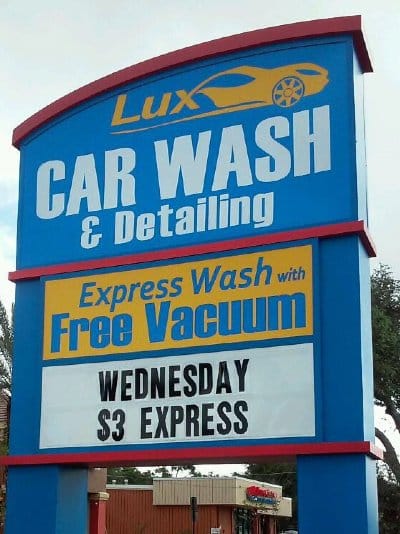
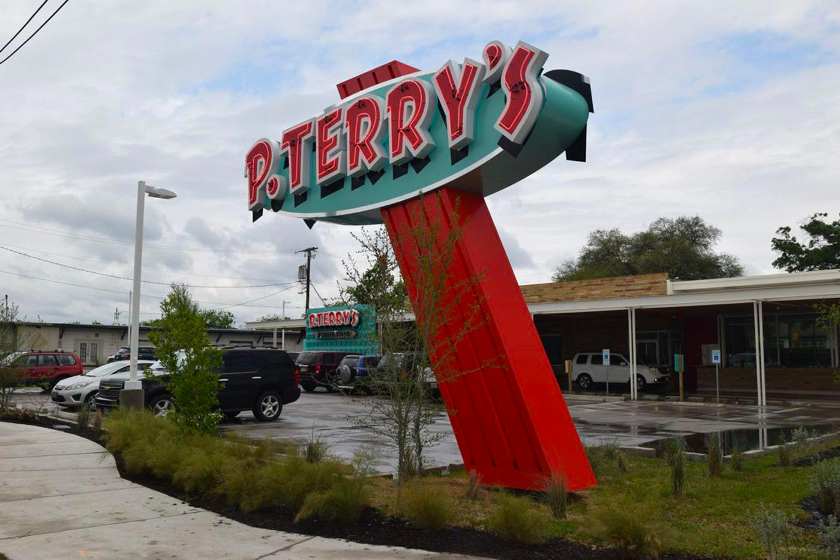
Roadway signs provide visibility for stores located in areas with fast moving traffic. (Sources: L&J Signs/L and Comet Signs/R)
Roadway signs are the large signs that stores place on long poles or within structures outside their businesses. For example, almost every gas station has a roadway sign that displays its brand name and prices for that day.
Roadway signs are great for creating an attention-grabbing display or increasing visibility if you are off a busy throughway. Additionally, roadway signs can also be digital, allowing you to flash and rotate information and images. They can also include lit signage or be lit through spotlights, great for shops that are open late at night.
- Pros: Attention-grabbing, good visibility, elevate store name
- Cons: Expensive, take up a lot of space
- Best uses: Stores located on busy throughways or near a highway, stores that operate at night
- Average cost: $700–$10,000
4. Create Your Storefront Sign Design
When it comes to designing your final product, consider the following tips to maximize your storefront sign’s potential for enticing the right customers and driving sales.
5. Source Your Storefront Sign
There are many resources that you can look to when it comes to sourcing your storefront sign. From local shops you can visit to ecommerce sites you can browse from home, you should consider your options and select a signage retailer that works with your schedule, budget, and desired end-product.
Questions to Ask When Sourcing Signage
Regardless of which type of signage company you work with, you want to ask the right questions. This will ensure that your sales rep exposes you to all the available services and you get the best price.
Here are some questions to ask when you contact a sign company:
- Will the sign company apply for any needed construction permits?
- Does the company offer design services?
- What are the cost differences among materials?
- What sizes are available?
- How do you determine pricing?
- How does adding additional colors or design elements affect my cost?
- Does the company offer installation?
- Is there an extra installation fee?
- What maintenance and cleaning does this material require?
- Does the company offer maintenance? At what cost?
- Does the company offer insurance or warranties for installation or any mishaps that might happen to the sign?
- What is the timeline, from the time you select your sign to the time it is installed?
6. Place Your Storefront Sign
With your sign ready to go, it’s time to position it outside of your storefront. When placing your sign, the biggest thing that you will want to think about is visibility.
Consider the following when thinking about visibility:
- Your shopping environment: How are people shopping? Are they right outside and in close range or driving by on a nearby road? Look at how customers are viewing your exterior and place your sign accordingly.
- How much space you have: If you have a lot of space, you can use large signs. If you do not, you can still use large signs but they must be space-effective like banners or lit displays.
- How the sign will compliment your storefront: You want your sign to be placed in the best spot for visibility without compromising your storefront aesthetic. Place your sign in a way that both complements your storefront and provides good visibility.
For example, this chocolatier is located on a walking street in a shopping center, so it opted for a sign that is flush with its storefront. This not only makes its signage a design feature for the store exterior, but the height also allows it to be visible from the other side of the street.
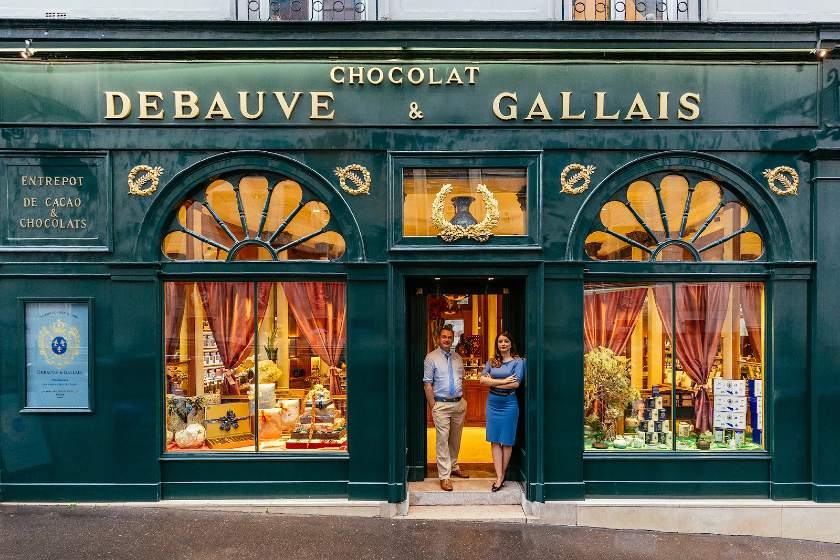
This chocolatier uses gold lettering placed high on its storefront to maximize visibility and design appeal. (Source: Architectural Digest)
Bottom Line
Designing a storefront plays a major role in creating your first impression, defining your brand, and enticing people into your store. The type of sign you choose, the materials you use, and the actual design you create are all choices unique to your business. Using this guide, you will be ready to design a storefront sign that is right for your business and gets customers running through your doors.
You May Also Like …
- How to Start Your Retail Business
- Planning Your Retail Store Layout

